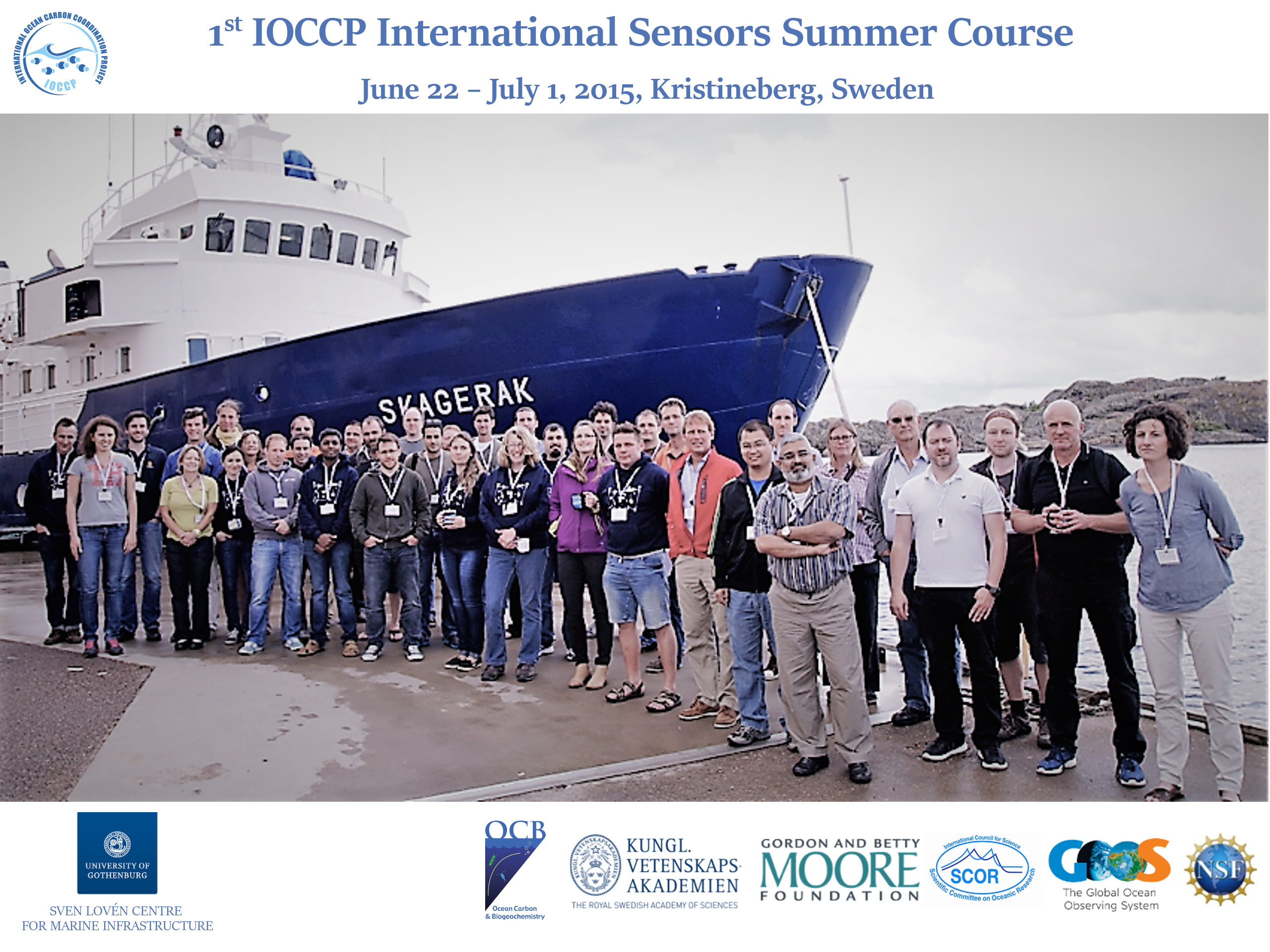We would like to inform you about the publication of “A user’s guide for selected autonomous biogeochemical sensors” now available for download as PDF from the IOCCP website ![]() HERE. The guide presents a final outcome of the 1st International IOCCP Sensors Summer Course held in 2015 in Kristineberg, Sweden. This user’s guide provides easy-to-follow steps on the usage (including preparation, deployment, recovery and basic data processing) of selected autonomous biogeochemical sensors which measure oxygen, nitrate, pCO2 and pH.
HERE. The guide presents a final outcome of the 1st International IOCCP Sensors Summer Course held in 2015 in Kristineberg, Sweden. This user’s guide provides easy-to-follow steps on the usage (including preparation, deployment, recovery and basic data processing) of selected autonomous biogeochemical sensors which measure oxygen, nitrate, pCO2 and pH.
The User’s Guide
The user’s guide was put together by the course participants which included 27 trainees, 13 lecturers and 4 manufacturer representatives. In the document you will find:
- Essential instrument know-how (instrument communication, sensor data quality control (QC), biofouling prevention, etc.)
- User recommendations
- Site-specific recommendations (preference of one type/model of instrument depending on location)
- Troubleshooting guidelines for commonly encountered problems
- Data management, quality and reporting.
We hope that you will find the user’s guide a useful resource.
The 1st International IOCCP Sensors Summer Course
In June 2015, the International Ocean Carbon Coordination Project, with co-sponsorship from the US Ocean Carbon and Biogeochemistry (OCB) Program, Scientific Committee on Oceanic Research (SCOR), the Royal Swedish Academy of Sciences (KVA), Global Ocean Observing System (GOOS), National Science Foundation (NSF) and the Gordon and Betty Moore Foundation, brought together 40 leading experts in the use of autonomous sensor technology for biogeochemical ocean observations. Participants of this 10-day workshop “International IOCCP Sensors Summer Course: Instrumenting Our Oceans for Better Observations” on best practices for selected biogeochemical sensors (oxygen, pH, pCO2, nitrate) held between 21 June – 1 July, 2015 in Kristineberg, Sweden, identified an urgent need for an easy-to-use, entry-level guide addressing the use and application of selected autonomous biogeochemical sensors. Such a guide would facilitate a universally accepted set of autonomous sensor guidelines to enhance global observing capacity, especially in the face of contemporary coastal ocean challenges such as acidification (pH and pCO2), nutrient loading (e.g., nitrogen), and deoxygenation.

This course addressed community recommendations that emerged from recent workshops (e.g., Observing Biogeochemical Cycles at Global Scales with Profiling Floats and Gliders) by expanding and educating the user-base for biogeochemical sensors as part of an integrated global ocean observing network. Standardized approaches to data collection and processing will enhance global data intercomparability, a fundamental requirement to enable true global ocean monitoring and detection of change. The course targeted commercial biogeochemical sensors that are readily available to the oceanographic community for measurement of oxygen, nitrate, bio-optics, and the inorganic carbon system. The goal of the course was to develop methodological protocols on sensor usage and data reporting. While this course targeted mature technologies, the discussion of emerging technologies to tackle measurements of other important biogeochemical variables was also encouraged and promoted throughout the course.
The User Guide guide can also be accessed in National/International Reference Materials.